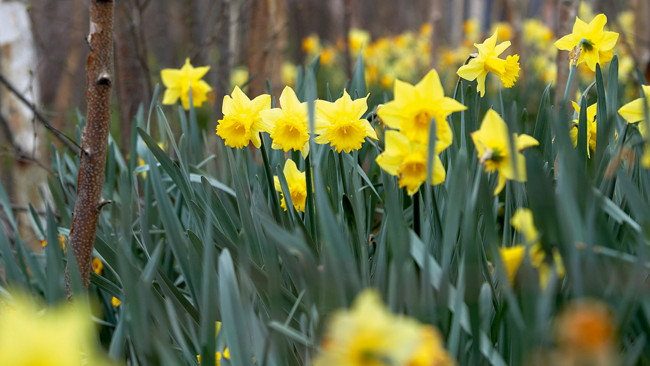Also known as Narcissus, daffodils are so bright and cheerful in spring! Mass plant to naturalise in lawns or under deciduous trees in clumps for maximum effect.
How to grow:
Fertilise lightly with a bulb fertiliser when planting and also after flowering.
Feed: Fertilise lightly with a bulb fertiliser when planting and also after flowering.
Design: Daffodils look best when they are planted in clumps rather than in rows. The larger the clump, the better the effect. Planting them in groups of the same colour will create a pretty swathe of colour.
Pests: To keep snails and slugs at bay it is a good idea to use a little snail bait or beer traps regularly during growing season.
Store: Daffodils can remain undisturbed for many years. But, if digging is preferred, wait until the leaves have died right down and store in a cool, dry, ventilated place.
Tips: In warm climates, plant bulbs at double the recommended depth.
Tricks: If blooming does not happen one season, it is best to move bulbs to a new location.
Water: Natural rainfall should suffice. Keep bulbs moist during dry spells in autumn and late spring.
Originally published on homelife.com.au
SOURCE: http://www.heraldsun.com.au/lifestyle/home-garden/in-bloom-now-daffodils/story-fnivsv0u-1226722220178

